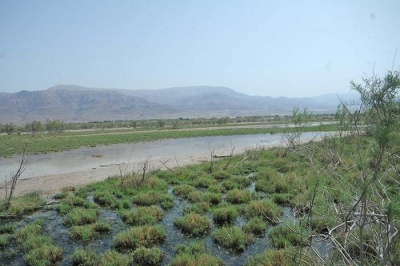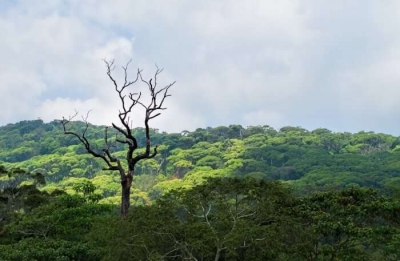Karak’s Fifa Nature Reserve registers as world’s lowest wetland

Spanning an area of more than 23 sq.km., the Fifa Nature Reserve is located in the southwestern part of Jordan. The wetland lies in the Jordan Rift Valley and is fed by several water sources from natural springs to seasonal floods. The lowest point in the Reserve stands at 420 mt below sea level, making it the "world's lowest wetland of international importance", according to the Ramsar Convention. Established in 2011, the Reserve's location in the Rift Valley makes it a significant spot supporting many species of wintering and breeding birds that migrate between Europe and Africa. It is important as one of the few remaining natural breeding habitats of Dead Sea sparrow" and is known to host the largest population of the Nubian nightjar. It also hosts the endangered killifish, houbara bustard, and the spiny tailed lizard. The Reserve is marked by saline vegetation, one of the several vegetation types of the country. The region is said to be home to a total of 4% of the country's plant species and 8% of animal species, including some that are endangered. Though the wetland is said to display semi-desert systems and high temperatures, the diverse flora and fauna seem to have adapted well to these seemingly difficult conditions.
Wildlife
The birds that can be seen in the Reserve are egrets, herons, bitterns, teals, mallards, garganeys, storks, pratincoles, snipes, redshanks, moorhens, stilts, plovers, lapwings, stints, sandpipers, ibises, grebes, falcons, finches, harriers. owls, shrikes, eagles, larks, doves, kestrels, warblers, sparrows, vultures, gulls, bulbuls, partridges, buzzards, gadwalls, terns, red knots, prinias, wheatears, rollers, bee-eaters, coursers, kingfishers, sunbirds, thrushes, nightjars, and bustards. Among the animals that one can spot in the area are lynx hyenas, deer, etc.
Lynx facts
- Found in the forests of North America, Europe, and Asia, the lynx belongs to the cat family.
- These carnivores can grow up to 40 inches long, but the sizes of the species vary depending on their geography. For instance, the Canadian lynx is smaller than its European cousins.
- These mammals have thick fur, and their paws are furry too, both of which help them survive harsh winters. Their sharp sense of hearing and vision help them spot their prey even a few hundred feet away!
- Though the lynx hunts small animals, deer, birds, squirrels, and mice, it feeds primarily on snowshoe hare. The change in the hare population, especially the decline, is believed to be affecting the cat population.
- These cats are said be hunted by humans sometimes for their fur. One of the species, the Iberian lynx is said to be the most endangered cat.
Houbara bustard facts
- Bustards are large, terrestrial birds, including some of the largest flying birds. They are listed as Vulnerable by the International Union for Conservation of Nature (IUCN).
- The IUCN recognises two types of the houbara bustard - one in North Africa (Chlamydotis undulata) and the other in Asia (Chlamydotis macqueenii). At least 20,000 birds in each species exist today.
- Asian houbara bustards are found from northeast Asia and central Asia to the Middle East, and the Arabian Peninsula.
- The birds are faced with several threats - from habitat destruction to poaching and hunting.
Picture Credit : Google
